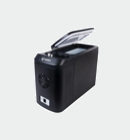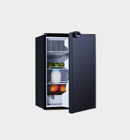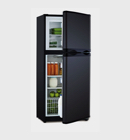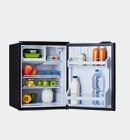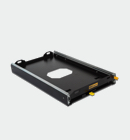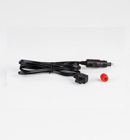How to install and wire a 12V Bushman Fridge
- Date Published: 8 January 2025
- Bushman Fridges
Operating voltage
The compressor in your bushman fridge as a tight operating range. If your power supply spikes above or dips below this range, even for a second, the compressor will stop. This is why wiring up your fridge correctly is so important. The 4 most important things to get right are the wire thickness, good joins, using a dedicated circuit for the fridge and installing a fuse or circuit breaker.
Voltage cut in and cut out
| Voltage | Cut in | Cut out |
| 12V | 10.9V | 9.6V |
| 24V | 22.7V | 21.3V |
1. Choose the correct wire thickness
When 12V electricity travels along a wire, it loses strength along the way. To combat this, you need to match the distance between your fridge and battery with the correct thickness of wire. The longer the distance, the thicker the wire needs to be. Our preferred measure of thickness is AWG, or American Wire Gauge.
Use the table below to work out what thickness matches the length of wire you require.
|
AWG (American Wire Gauge) |
12V Max Distance | 24V Max Distance |
| 14 | 2.5 | 5 |
| 12 | 4 | 8 |
| 10 | 6 | 12 |
| 8 | 10 | 20 |

2. Create strong joins in the wires
If you have any joins in your fridge circuit, it’s important they are not restrictive. Every join has the potential for power loss. We recommend using an Anderson plug, terminal block or soldering the wires together to ensure a good join. No twisties or loose connections!
3. Run a dedicated circuit to your fridge
Our preferred method for wiring your fridge is to run a dedicated circuit (positive and negative wires) directly from the fridge all the way to your battery bank. This always ensures the best possible power supply to your fridge. If you have another device running from the same circuit, this can cause power spikes or dips and cause the compressor to stop.
If you are using a battery management system or shunt to keep track of your fridges power consumption, ensure the fridge circuit is connected on the shunt terminal closest to your battery. In most cases this setup will be ok, but if you ever experience stop / start issues with your fridge, or intermittent defrosting – try bypassing your BMS or shunt and wiring the fridge circuit directly to your battery bank, as you might have a conflicting device in your electrical system causing a power spike or drop as it cycles on or off. Sometimes these conflicts are hard to pinpoint, but wiring your fridge directly to your battery bank will eliminate any possibility of a conflict.
4. Install an isolation switch, fuse or circuit breaker.
We recommend installing an isolation switch for the fridge circuit as close to your battery bank as possible. Any switches must have a breaking load not less than 20 A on 12 V or 10 A on 24 V. The power supply wiring must also be protected with a 15 A fuse or 15A circuit breaker.

